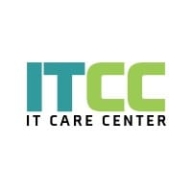

JIRA Service Management and IT Care Center are prominent competitors in the service management category. JIRA Service Management appears to hold an advantage due to its integration with Atlassian tools and customization capabilities, particularly in incident and request management, while IT Care Center impresses with its workflow flexibility and process improvement.
Features: JIRA Service Management offers extensive customization, ease of integration with third-party applications, and efficient issue tracking with dashboards and automation. IT Care Center provides simplicity and customization, enabling users to configure workflows and forms to meet specific requirements, streamlining service request management.
Room for Improvement: JIRA Service Management could enhance its integration with email systems, simplify its configuration process, and improve project management functionalities. IT Care Center should focus on improving its user interface, boosting mobile responsiveness, and developing more intuitive administration tools and direct integration with communication platforms.
Ease of Deployment and Customer Service: JIRA Service Management offers flexible deployment options, including public, private, and hybrid cloud solutions, catering to organizations of varying sizes with generally efficient customer service. IT Care Center is primarily on-premises, with satisfactory support, though there is potential for improvement in responsiveness and integration capabilities.
Pricing and ROI: JIRA Service Management comes with competitive pricing, offering scalability and a high ROI through operational efficiency, although costs can increase with additional add-ons and user seats. IT Care Center features a transparent pricing model, providing all modules under a single license, beneficial for smaller organizations. Both platforms deliver significant value through distinct pricing models and flexibility.

IT Care Center is an affordable end-to-end platform, designed to manage IT operations from ticketing to application development and lifecycle management. The system includes a built-in rapid application development platform that helps organizations meet their specific requirements faster while continuously improving the user experience and a recognised decrease in support costs and incidents ongoing.
The solution can operate as both a cloud and an on-premise service, and it includes a simple user interface, customizable dashboards, internal and external user support, automation, customizable chatbot, SLA management & monitoring tool plus ITIL best practice workflows.
JIRA Service Management is Atlassian’s IT service management (ITSM) solution. It unlocks all teams at high velocity by:
1. Accelerating the flow of work between IT teams, development teams, and business teams
2. Empowering teams to deliver their service more quickly
3. Bringing visibility to their work
Built on JIRA, JIRA Service Management enables best practices across request, incident, problem, change, knowledge, asset, and configuration management so that teams can streamline collaboration between themselves. More than 30,000 customers of all sizes rely on JIRA Service Management to deliver service.
JIRA Service Management Features
JIRA Service Management has many valuable key features. Some of the most useful ones include:
JIRA Service Management Benefits
There are many benefits to implementing JIRA Service Management. Some of the biggest advantages the solution offers include:
Reviews from Real Users
JIRA Service Management stands out among its competitors for a number of reasons. Some of these include its stability, its easy customization, and its seamless integration with other solutions. PeerSpot users take note of the advantages of these features in their reviews:
Abhishek S., a Program Lead at PureSoftware, writes of the solution, “You can scale the solution whether it is deployed to the cloud or the data center. While we might have up to 5,200 people using the solution, we do not require that many licenses, as only those dealing with the tickets are required to be licensed.”
Andrew B., a Technical Engineer at a consultancy firm, notes, “One of the valuable features is that an automatic response or action can be taken on tickets. We can have certain responses for tickets that contain keywords or are logged and tagged with certain labels.”
We monitor all IT Service Management (ITSM) reviews to prevent fraudulent reviews and keep review quality high. We do not post reviews by company employees or direct competitors. We validate each review for authenticity via cross-reference with LinkedIn, and personal follow-up with the reviewer when necessary.